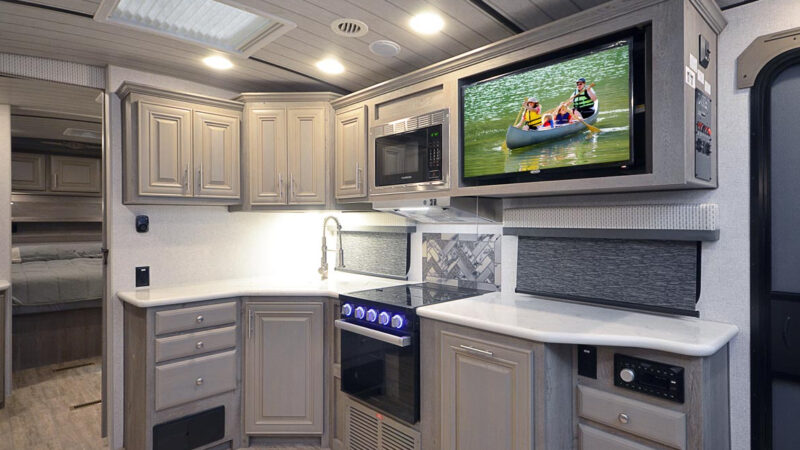DJI Power 1000 Review: A Fast-Charging Power Station with Solid Specs
If you’re familiar with the brand DJI, it’s probably because you’ve seen the company’s popular line of prosumer drones. Over the past decade, it has essentially cornered the market for affordable UAVs tailored to the needs of photographers, videographers, and amateur drone pilots. Eventually, its line of products expanded to include cameras, gimbals, wireless mics, and other accessories that enhance the capabilities of its core audience. Recently, the DJI catalog expanded further, this time adding portable power stations to its already impressive line-up.
At first glance, this might seem like an unusual new product category for a company best known for making camera drones, especially considering how competitive the power station market has become recently. But when you take into account DJI’s deep connection with its customers, the move actually makes a lot of sense. After all, those photographers and videographers need to keep all of their gear charged and functioning while often working in remote locations. From that perspective, it makes you wonder why it took so long for these charging solutions to arrive.
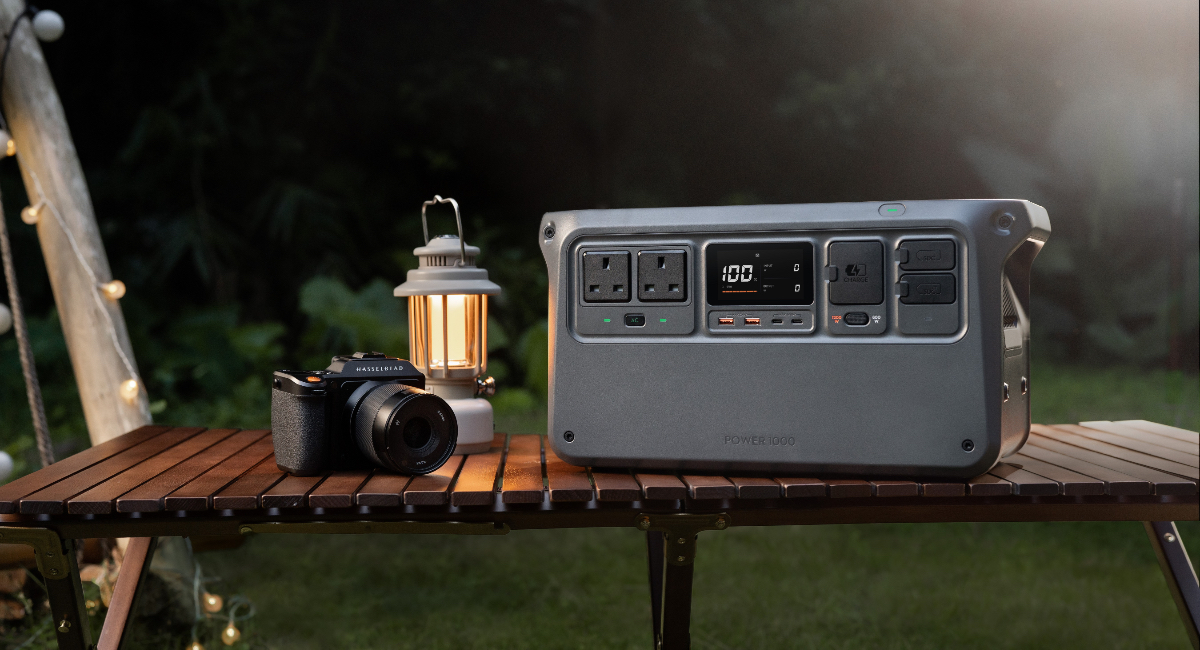
Photo Credit: DJI
The new power stations come in two versions—the DJI Power 500 and the DJI Power 1000. The former of those products is a bit smaller and more compact, sacrificing storage capacity in favor of portability. Meanwhile, the larger unit looks to strike a balance between size, weight, and features, adding a few pounds for all-around improved performance.
Recently, we had the chance to put the Power 1000 through its paces and came away impressed. With its first entry into this increasingly crowded market space, DJI has managed to nail all the basics, delivering a power station that offers everything most people need in a utilitarian—yet attractive—form factor.
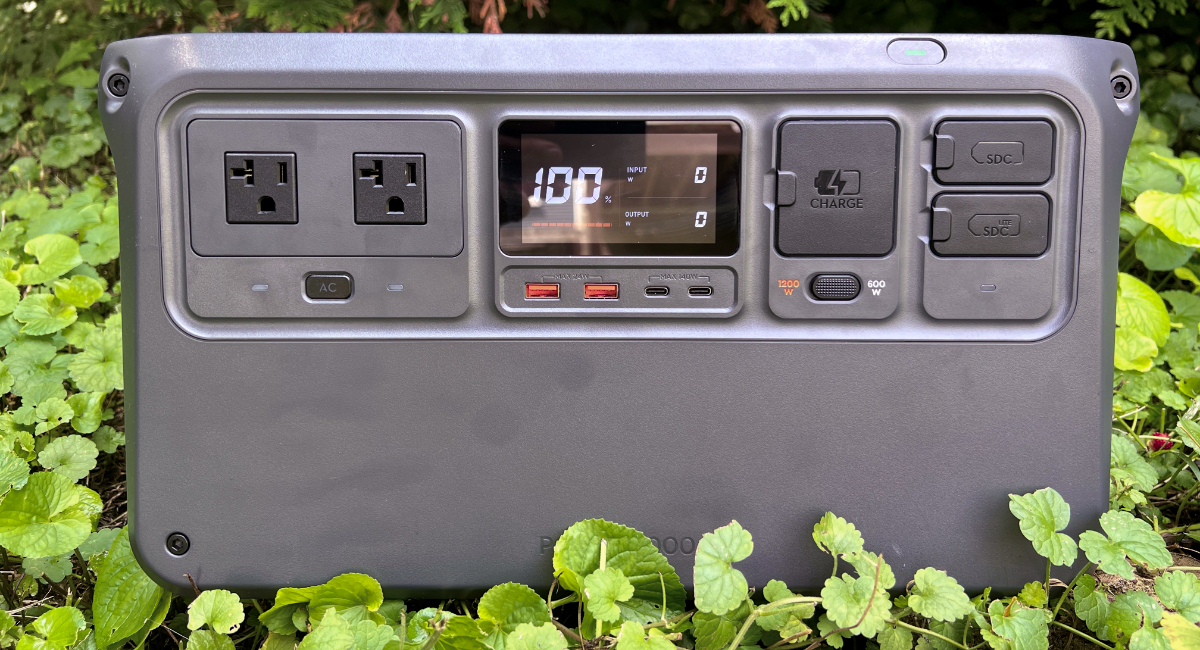
Photo Credit: Kraig Becker
Performance and Ports
In terms of power storage and output, the DJI Power 1000 is on par with most of the competition for its size and price point. The unit offers a max output of up to 2,220W and has a 1,024Wh battery. That’s enough to recharge a smartphone more than 50 times or a laptop as many as nine times. It can also run a portable refrigerator for approximately 19 hours or a coffee maker for nearly an hour. And if you happen to use a DJI drone, the power station supplies enough juice to recharge in the field as many as 12 times.
When it comes to charging electronic devices or running appliances, the Power 1000 has two 120V AC outlets, two 24W USB-A ports, and two 140 USB-C PD (power delivery) ports. Compared to the competition, that doesn’t seem like a lot, as many other power stations of similar size often have an additional AC outlet or two, and most also include a 12V DC vehicle port, which admitedly sees fewer use cases these days.
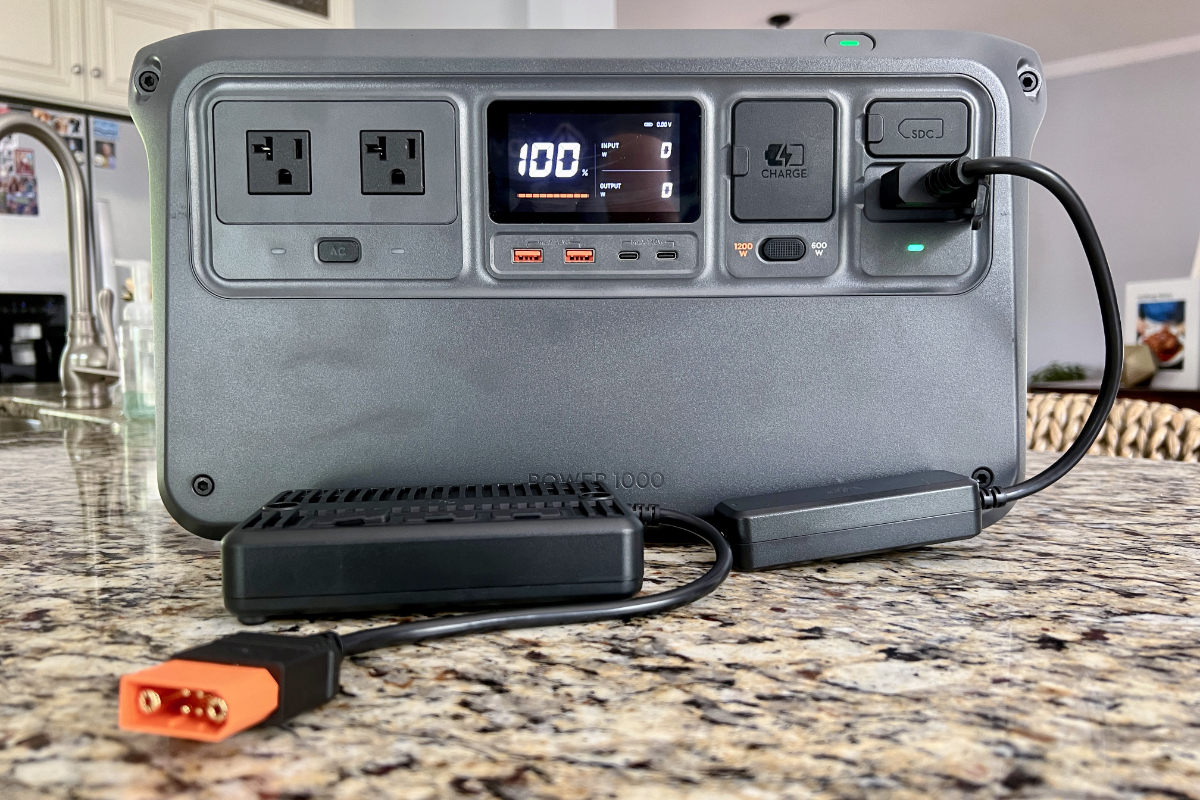
Photo Credit: Kraig Becker
The reality is that, given the size of the unit, this is more than enough charging ports for most people. Especially when you consider the USB-C PD ports provide plenty of power to recharge a laptop, freeing up the dual AC outlets for other uses. Sure, there may be times when it is possible to have something plugged into each port, but those are likely to be few and far between. And with a good power management plan, you’ll rarely feel like the Power 1000 doesn’t have enough capacity to meet your needs.
It should also be noted that DJI has included two proprietary ports that do add additional charging capabilities, provided you have the proper cables. These SDC (Smart DC) ports are bidirectional—meaning power can flow in both directions—and are unique to the Power 1000 and Power 500 devices. The ports are highly versatile, allowing solar panels to connect to the power stations to recharge their internal batteries, or they can be used to fast-charge DJI drone batteries. To fully take advantage of those capabilities, you’ll need to purchase special cables, however. But for the brand’s core audience, the additional expense will seem nominal.
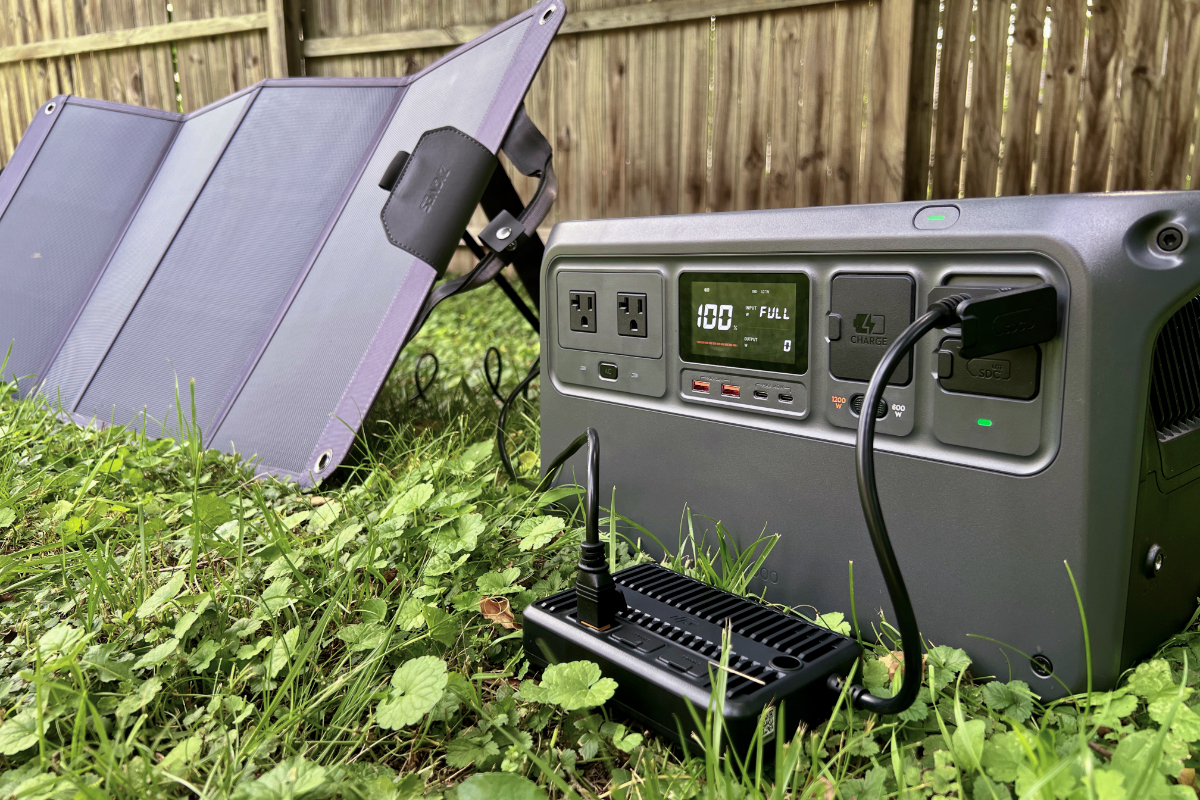
Photo Credit: Kraig Becker
A Fast Charger
One area in which the Power 1000 is in a class all its own is fast charging. DJI says the power station can fully recharge in about 70 minutes and go from zero to 80% in just 50 minutes. That’s remarkably quick, but I found the actual numbers were even faster than advertised. When plugged into a 120V AC wall outlet at home, a fully depleted unit hit the 80% mark in less than 45 minutes and was fully charged in about an hour. That translates to less downtime for content creators using the device in the field.
As with most modern power stations, the Power 1000 can be recharged using a wall outlet at home, a 12V DC port in a vehicle, or up to six solar panels at the campsite. The unit ships with an AC charging cable, but you’ll need to purchase a car charger separately for $49. Most competing products include that cable in the box, which comes in handy for recharging while driving.
If you plan to charge using the sun, you’ll also need a $59 solar panel adapter or two. Those adapters plug into the aforementioned SDC ports and connect up to three solar cells each for a potential maximum of six panels in total. DJI’s solar panels —outsourced from a company called Zigness—are 100W models and are fairly lightweight and portable. In direct sunlight, they’re also quite efficient, supplying a steady stream of energy back to the power station. We only had one solar panel for use during our testing, but over the course of a day in the sun, it managed to keep the battery topped off nicely.
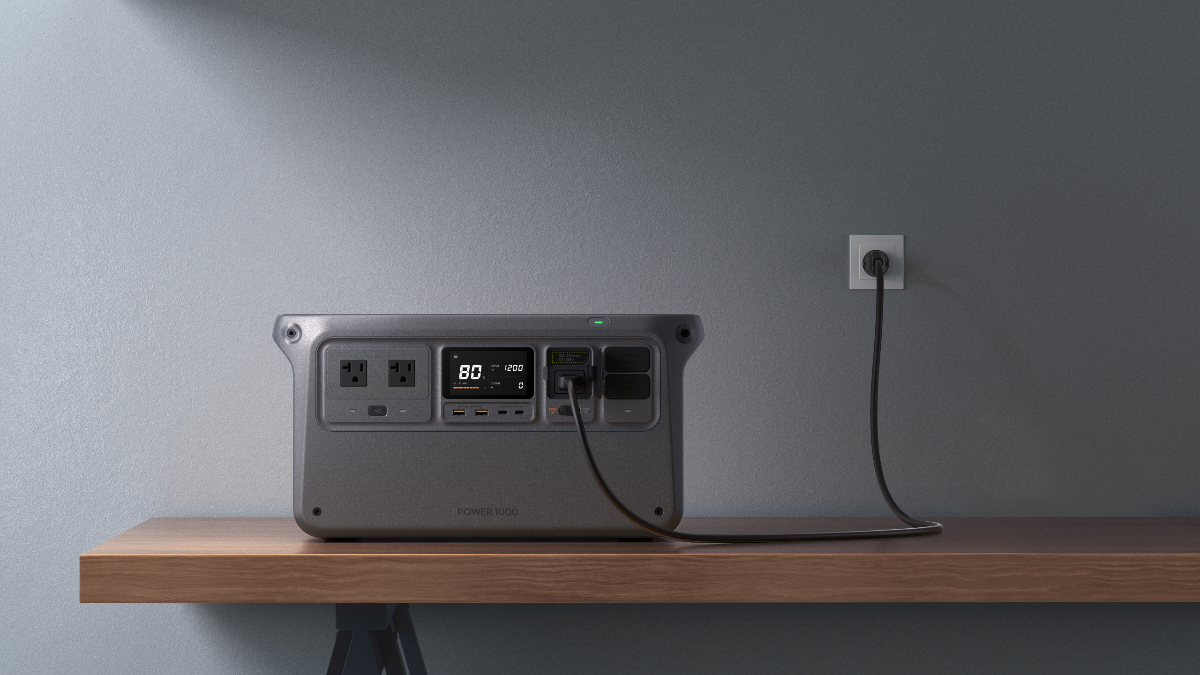
Photo Credit: DJI
No-Frills Simplicity
Weighing 28.6 lbs., the Power 1000 is about on par with most other power stations in its class. Similarly, its 17.6” x 8.8” x 9” dimensions are fairly standard for the specs and performance the unit offers. A pair of handles on either side of the case make it easy to carry, and its rugged design feels solid and dependable. A bright, simple, and easy-to-read digital display shows current battery levels, power in, and power out, along with which ports are currently active.
Beyond that, the Power 1000 doesn’t have much in the way of features and frills. It doesn’t have remote control or monitoring via a smartphone app, nor can it be used as an uninterruptible power supply. It also doesn’t have any gimmicks like swappable battery packs or wireless charging pads. Instead, DJI’s first entry into the portable power station market focuses on simplicity and reliability, offering an easy-to-use charging solution designed for use in the outdoors.

Photo Credit: DJI
DJI’s core audience isn’t likely to miss any of the features mentioned above. The Power 1000 delivers the performance they need to keep their devices operating in the field. They probably won’t even mind spending a bit more to purchase the proprietary cables needed to fast-charge their drones and cameras in the field. But for those who exist outside the DJI ecosystem, the power station may feel a bit too simple and limited at times.
All of that said, the Power 1000’s $999 price tag—currently on sale for just $699—makes it a very attractive option. That’s a great price for a power station that delivers excellent storage capacity and output. Its fast-charging capabilities are impressive, too, making it an excellent tool for anyone who needs portable power on the go. It may lack a few frills here and there compared to the competition, and its use of proprietary ports and cables will be limiting to some. But the unit’s no-nonsense approach will be appreciated by others, and as already stated, fans of the DJI brand will find a lot to like here.
The DJI Power 1000 is available now. For more information, visit the DJI website.
The post DJI Power 1000 Review: A Fast-Charging Power Station with Solid Specs appeared first on RV.com.



